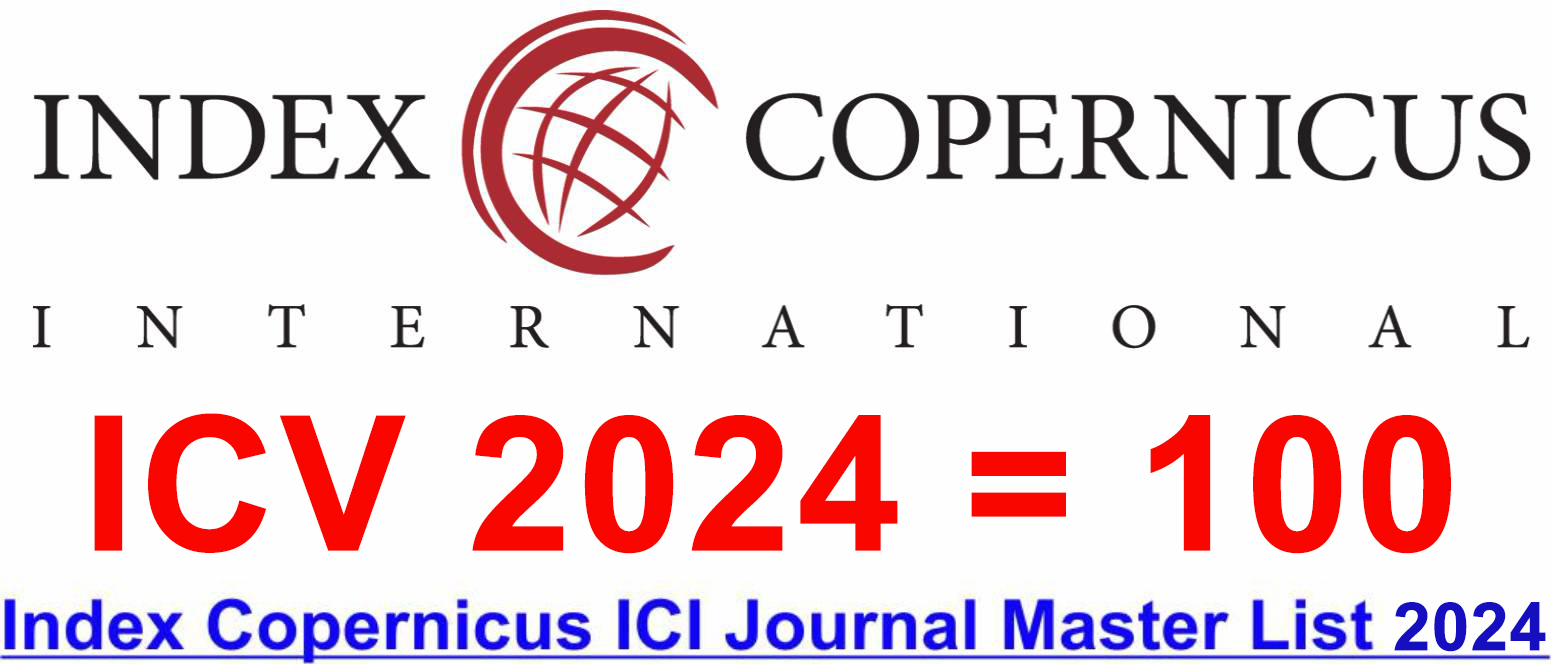Indian Fiscal Deficit in Autoregressive Distributed Lag (ARDL) Model
DOI:
https://doi.org/10.46977/amt.2025.v05i04.001Keywords:
External Debt, Fiscal Deficit, Gross Domestic Product Per Capita, Income Inequality, Inflation, Unemployment RateAbstract
In this paper the author showed the trends of fiscal deficit and examined the short run and the long run nexus between fiscal deficit and gross domestic product per capita, inflation rate (CPI), external debt (% of GDP), unemployment rate (% of labour force), income inequality (income share difference between top 10% and bottom 50%), and military expenditure, respectively, during 1950-51-2023-24 in India by applying Auto Regressive Distributed Lag model. The paper found that the fiscal deficit contains a quadratic trend and denoised wavelet shrinkage. Automatically selected ARDL (3,0,2,3,0,0,3) model, where Akaike Information Criterion (AIC) is minimum, showed that the fiscal deficit is positively associated with inflation and negatively related with debt and per capita GDP significantly in the long run while positively related with inflation and debt and negatively related with military expenditure in the short run significantly. The cointegrating equation states that inflation and debt are directly related and GDP per capita is inversely related to fiscal deficit, and it is converging towards equilibrium at the speed of adjustment of 92% per annum significantly. Unemployment and income inequality have a positive impact on the fiscal deficit in the short and long run insignificantly. The model is stable and contains no serial correlation but contains heteroscedasticity and non-normality. The model demands expenditure-reducing policies in non-plan and defence expenditure, as well as employment and poverty amelioration-oriented fiscal financing at a threshold limit, to achieve sustainable economic growth.
Downloads
References
Banday, U. J., & Aneja, R. (2019). Twin deficit hypothesis and reverse causality: a case study of China. Palgrave Communications, 5(1), 1-10. https://doi.org/10.1057/s41599-019-0304-z
Banerjee, R., Boctor, V., Mehrotra, A. N., & Zampolli, F. (2022). Fiscal deficits and inflation risks: the role of fiscal and monetary regimes. Bank for International Settlements, Monetary and Economic Department. Retrieved from: https://www.bis.org/publ/work1028.htm. Accessed on 12th January 2024
Bhowmik, D. (2017, December). India’s fiscal deficit: A macro-econometric approach. The Indian Economic Journal, Special Issue,8-26. Accessed on 12th January 2024
Breusch, T. S., & Pagan, A. R. (1979). A simple test for heteroscedasticity and random coefficient variation. Econometrica: Journal of the Econometric Society, 1287-1294. https://doi.org/10.2307/1911963
Congregado, E., Díaz-Roldán, C., & Esteve, V. (2023). Deficit sustainability and fiscal theory of price level: the case of Italy, 1861–2020. Empirica, 50(3), 755-782. https://doi.org/10.1007/s10663-023-09577-w
Darshini, J. S., & Gayithri, K. (2021). Fiscal Federalism: Transfer Dependency and Its Determinants Among Select Indian States. Institute for Social and Economic Change. Retrieved from: https://www.isec.ac.in/wp-content/uploads/2023/07/WP-524-Darshini-J-and-K-Gayithri-final.pdf. Accessed on 12th January 2024.
Dickey, D. A., & Fuller, W. A. (1979). Distribution of the estimators for autoregressive time series with a unit root. Journal of the American Statistical Association, 74(366a), 427-431. https://doi.org/10.1080/01621459.1979.10482531
Donoho, D. L., & Johnstone, I. M. (1996). Neo-classical minimax problems, thresholding and adaptive function estimation. Bernoulli, 2(1), 39-62. https://doi.org/10.3150/bj/1193758789
Dowd, K. (2020). The Deficit Myth: Modern Monetary Theory and the Birth of the People’s Economy. Cato Journal. Retrieved from: https://www.cato.org/cato-journal/fall-2020/deficit-myth-modern-monetary-theory-birth-peoples-economy. Accessed on 12th January 2024.
Dutt, R., & Sundaram, K.P.M. (1998). Indian Economy. New Delhi: S. Chand & Co. Retrieved from: https://www.scribd.com/doc/236485148/indian-economy-dutt-sundaram, Accessed on 30th January 2024.
Ekpo, U.N., Akpan, B. L., & Ekaetor, E.A. (2024, April). An Examination of Fiscal Deficit - Economic Growth Nexus for Nigeria using the Bound Test Approach. AKSU Journal of Administration and Corporate Governance, 4(1),186-204. https://doi.org/10.61090/aksujacog.2024.015
Fouzdar, A. S. (2022). Dynamics of India Fiscal Deficit: An Analytical Study of Issues and Management. PhD Thesis. Dayalbagh Educational Institute. Retrieved from: https://shodhganga.inflibnet.ac.in/handle/10603/512601. Accessed on 11th January 2024.
Gllogjani, L., & Balaj, D. (2021). The assessment of fiscal deficit on economic growth in transition countries of Southeastern Europe. Journal of Liberty and International Affairs, 7(3),102-118. https://doi.org/10.47305/JLIA2137102g
Gnimassoun, B., & Do Santos, I. (2021). Robust structural determinants of public deficits in developing countries. Applied Economics, 53(9), 1052-1076. https://doi.org/10.1080/00036846.2020.1824063
Haar, A. (1910). Zur Theorie der orthogonalen Funktionensysteme. Mathematische Annalen, 69(3), 331–371. https://doi.org/10.1007/BF01456326
Hussain, M. E., & Haque, M. (2017). Fiscal deficit and its impact on economic growth: Evidence from Bangladesh. Economies, 5(4), 37. https://doi.org/10.3390/economies5040037
Jackson, A. (2020, July 14). The Fiscal Deficit, Modern Monetary Theory and Progressive Economic Policy. The Bullet (Socialist project). Retrieved from: https://socialistproject.ca/2020/07/fiscal-deficit-mmt-progressive-economic-policy/. Accessed on 12th January 2024.
Krishna, R. (1984). The growth of aggregate unemployment in India: trends, sources, and macroeconomic policy options. (No Title). Retrieved from: https://documents1.worldbank.org/curated/en/190601468752708595/pdf/multi0page.pdf, Accessed on 7th January 2024.
Mian, A. R., Straub, L., & Sufi, A. (2022). A Goldilocks Theory of Fiscal Deficits (No. w29707). National Bureau of Economic Research. https://doi.org/10.3386/w29707
Musibau, H. O., Zakari, A., & Taghizadeh-Hesary, F. (2024). Exploring the Fiscal policy—income inequality relationship with Bayesian model averaging analysis. Economic Change and Restructuring, 57(2), 21. https://doi.org/10.1007/s10644-024-09577-1
National Sample Survey Office. (2011-12). Employment and Unemployment Situation Among Social Groups in India. NSS ReportNo.563(68/10/4). Retrieved from: https://mospi.gov.in/sites/default/files/publication_reports/nss_rep_563_13mar15.pdf. Accessed on 15th January 2024.
Page, E. S. (1954). Continuous inspection schemes. Biometrika, 41(1/2), 100-115. https://doi.org/10.2307/2333009
Patra, S. (2017, December). Impact of Fiscal Responsibility and Budget Management on Deficit in India. The Indian Economic Journal, Special Issue, 95-102.
Pesaran, M. H., Shin, Y., & Smith, R. J. (2001). Bounds testing approaches to the analysis of level relationships. Journal of Applied Econometrics, 16(3), 289-326. https://doi.org/10.1002/jae.616
Pesaran, M., & Shin, Y. (1999). An Autoregressive Distributed Lag Modeling Approach to Cointegration Analysis. In Strom, S. (Ed.). Econometrics and Economic Theory in the 20th Century: The Ragnar Frisch centennial Symposium, Cambridge University Press, Cambridge. https://doi.org/10.1017/CCOL521633230
Philip, D. S. (2021). Budget deficit-macroeconomic variables nexus in Kenya. Journal of Economics & Management, 43, 270-292. https://doi.org/10.22367/jem.2021.43.13
Ramu MR, A., & Gayithri, K. (2016). Fiscal deficit composition and economic growth relation in India: A time series econometric analysis. ISEC Working Paper, 367(367), 1-18. Retrieved from: https://mpra.ub.uni-muenchen.de/76304/. Accessed on 13th January 2024.
Rangarajan, C., & Srivastava, D. K. (2004). Fiscal Deficits and Government Debt in India: Implication for Growth and Stabilization. Being an Address to the Reserve Bank of India. Retrieved from: https://ideas.repec.org/cgi-bin/refs.cgi. Accessed on 15th January 2024.
Saraireh, S. (2020). The impact of government expenditures on unemployment: A case study of Jordan. Asian Journal of Economic Modelling, 8(3), 189-203. https://doi.org/10.18488/journal.8.2020.83.189.203
Sore, A. G., Ayana, I. D., & Demissie, W. M. (2024). On the fiscal deficit and economic growth in sub-Saharan Africa: A new evidence from system GMM. PloS one, 19(7). https://doi.org/10.1371/journal.pone.0303825
Tymoigne, E. (2023). Modern money theory on fiscal and monetary policies: empirics, theory, and praxis. European Journal of Economics and Economic Policies, 20(1), 11-22. https://doi.org/10.4337/ejeep.2022.0092
Westcott, D.N., & Bednarzik, R. W. (1981). Employment & unemployment: A Report in 1980. Monthly Labour Review, February. Retrieved from: https://www.bls.gov/opub/mlr/1981/02/art1full.pdf . Accessed on 15th January 2024.
Wilk, M. B., & Gnanadesikan, R. (1968). Probability plotting methods for the analysis for the analysis of data. Biometrika, 55(1), 1-17. https://doi.org/10.1093/biomet/55.1.1
Yılmaz, S. C. (2023). The influence of fiscal policy on unemployment rate in Türkiye. Journal of Management and Economics Research, 21(3), 58-72. http://dx.doi.org/10.11611/yead.1316839
Published
How to Cite
Issue
Section
Copyright (c) 2025 Advancement in Management and Technology (AMT)

This work is licensed under a Creative Commons Attribution-NonCommercial 4.0 International License.
















